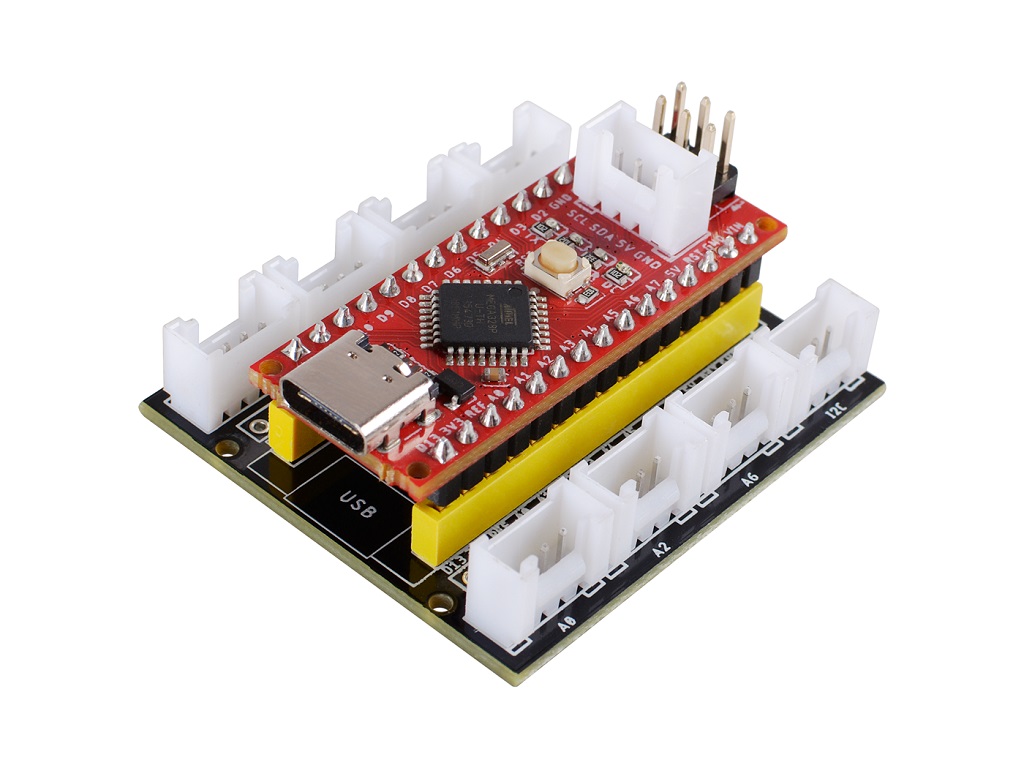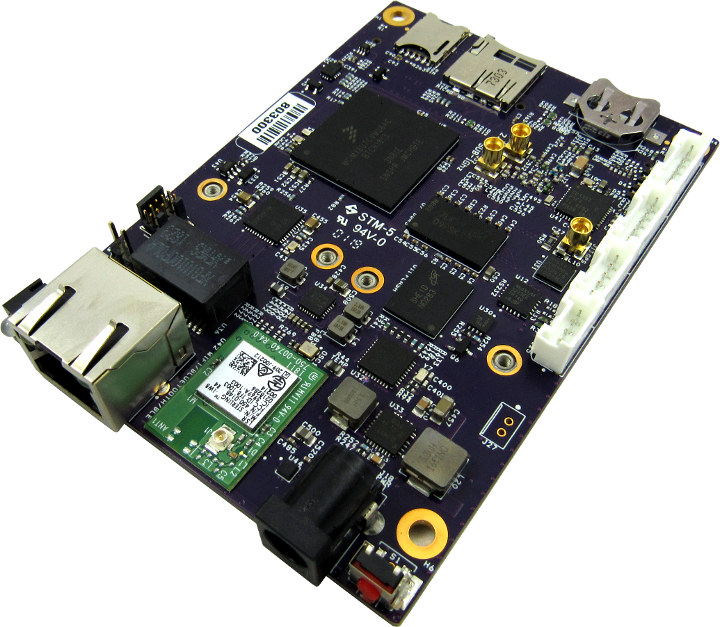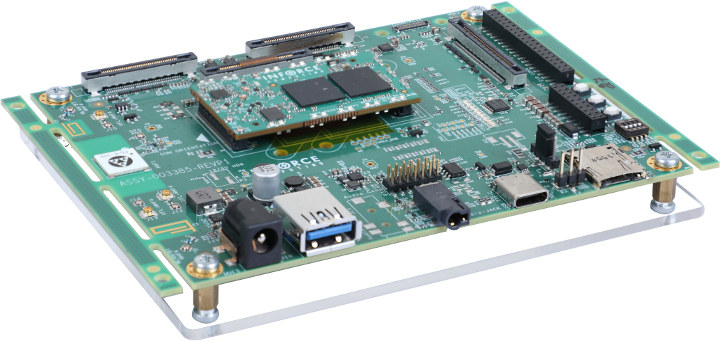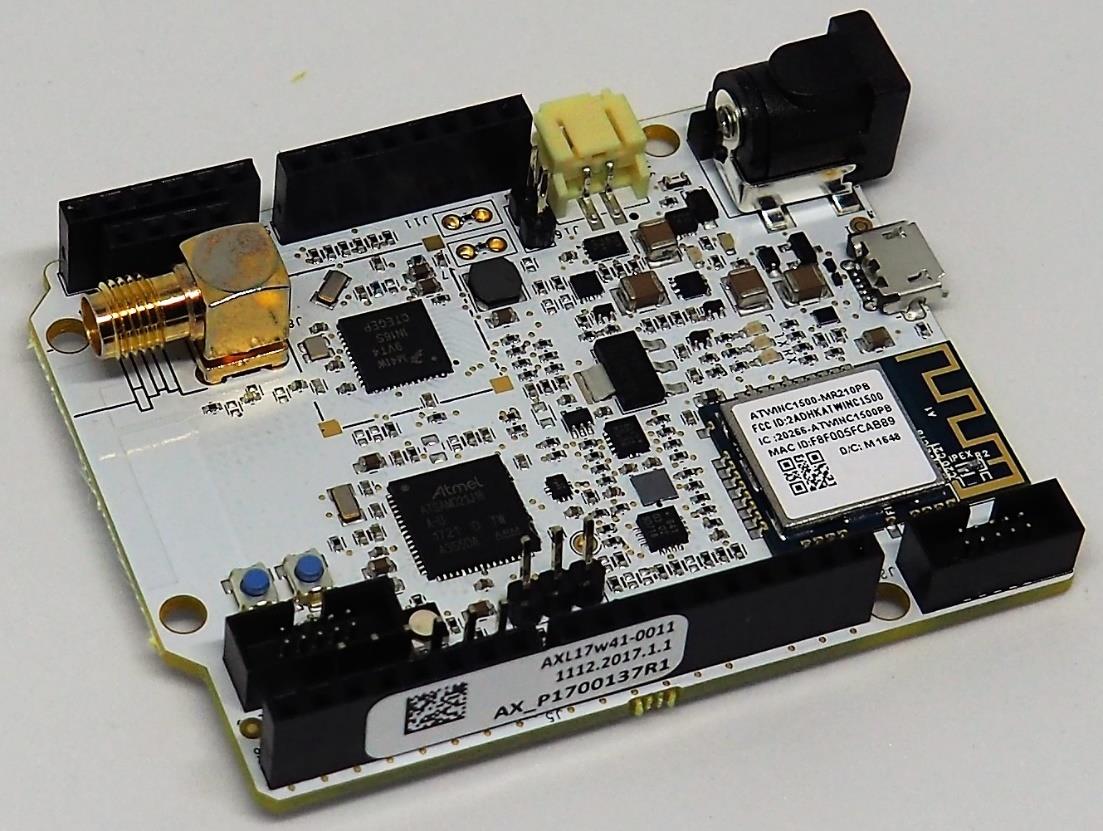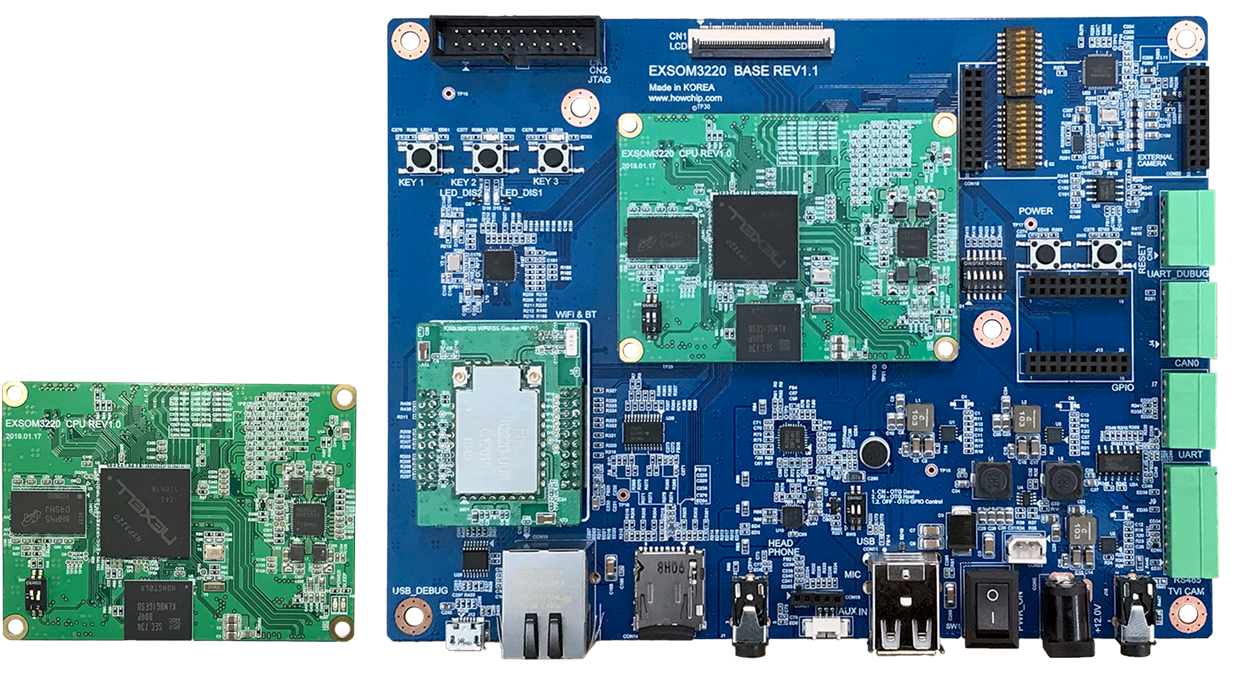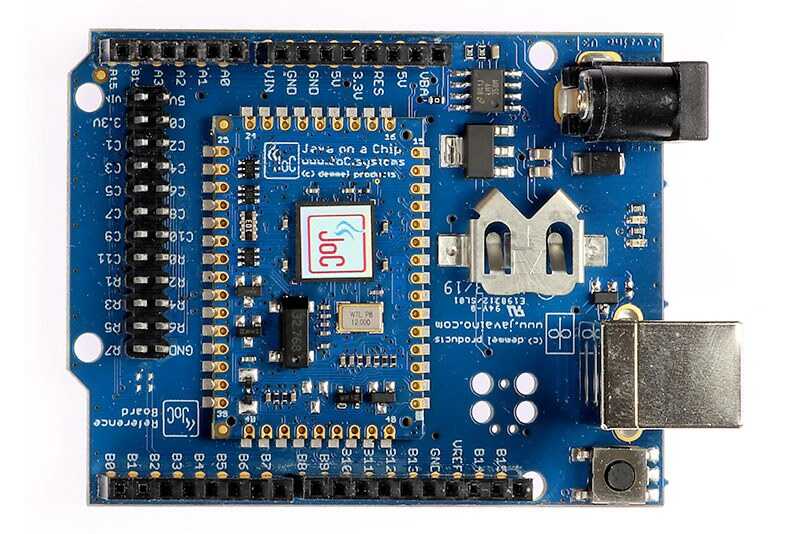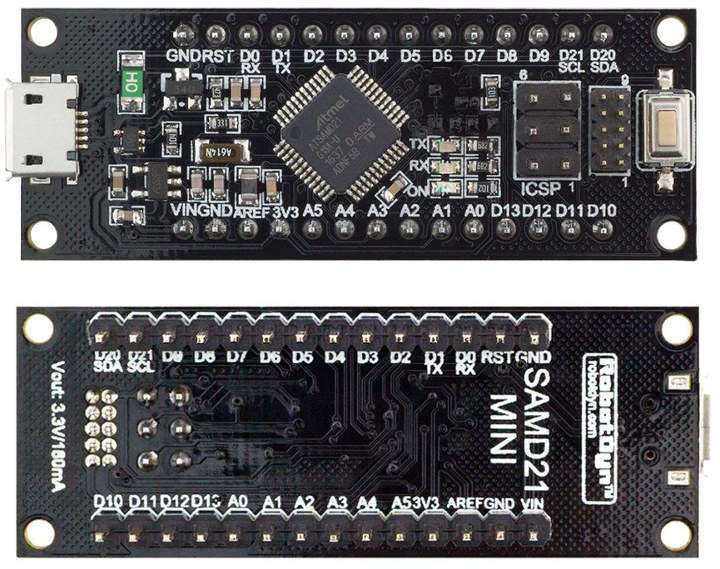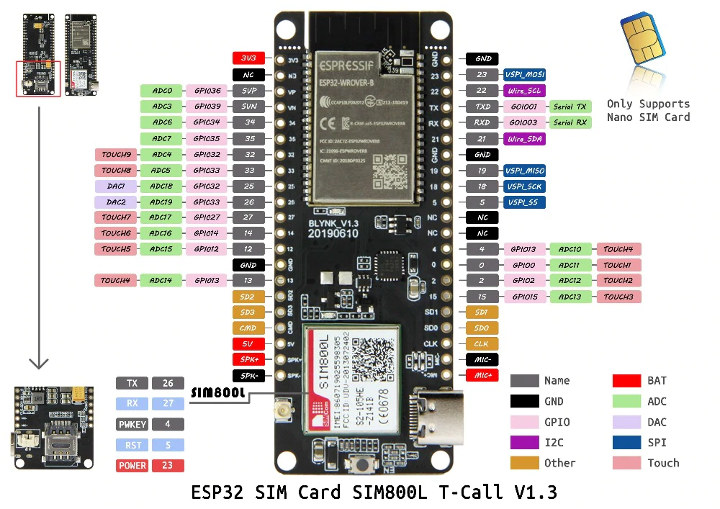Seeed Studio has announced the release of yet another compact board. The new board, Seeeduino Nano, is quite similar to the Arduino Nano board, and fully compatible. Another thing about the new board is that it has some different features. Seeeduino Nano comes with only one on-board Grove connector, but it can be expanded with the optional Grove shield adding 8 Grove connectors. More precisely, the shield has 3 Grove digital connectors and 3 Grove analog connectors, as well as 1 Grove I2C connector, and 1 Grove UART connector. Program Code Firstly, the Seeeduino Nano is built around Atmega328P 8-bit AVR microcontroller. This is the same as the Arduino Nano board, meaning you can use the same program code on both boards. There’s no specific Wiki for Seeeduino Nano, but it’s similar, albeit much smaller than the well-documented Seeeduino V4.2. Price of the Seeeduino Nano Board The board is […]
Gateworks Ventana GW5910 SBC Targets WiFi, BLE & Sub-1GHz IoT Gateways
Freescale/NXP i.MX6 based Gateworks Ventana single board computers have been around at least since 2013 and were initially targeting networking processing applications for the industry. They could be used into all sort of gateways with cellular or WiFi connectivity for instance, thanks to the presence of mini PCIe sockets. But the latest Gateworks Ventana GW5910 SBC does not exclusively relies on mini PCIe cards for wireless connectivity, as it includes an onboard Laird Sterling 802.11b/g/n WiFi & Bluetooth module, as well as optional TI CC1352P dual-band Wireless MCU supporting Sub-1GHz and 2.4GHz RF, and an optional on-board u-blox GPS module, which should lower the total cost compared to solutions with mini PCIe cards. Ventana GW5910 specifications: SoC – NXP i.MX6 Dual Core Arm Cortex-A9 SoC Processor @ 800MHz System Memory – 512MB DDR3-800 SDRAM Storage – 256MB Flash System Memory, microSD card slot, mSATA socket Connectivity Gigabit Ethernet Port Onboard […]
Inforce Introduces Snapdragon 660 & 845 Modules with On-Device AI
Inforce Computing has just launched two new pin-compatible system-on-modules, namely Inforce 6502 and Inforce 6701, powered by Qualcomm Snapdragon 660 & Snapdragon 845 SoC respectively. In their newsletter, the company claims those are their first modules with on-device AI capabilities with the Snapdragon 660 enabling “advanced visual computing, enhanced graphics and on-device machine learning capabilities”, while the more powerful Snapdragon 845 is better suited for “immersive multimedia experiences including optimized AI performance for a more responsive, power-efficient user- experience and capture of cinema-grade videos in UHD@60fps resolution. Inforce 6502 Snapdragon 660 SoM Specifications: SoC – Qualcomm Snapdragon 660 with 8-core Kryo 260 processor, Adreno 512 GPU, Qualcomm Hexagon 680 DSP with Hexagon Vector eXtensions (HVX) for Caffe2 and Tensorflow System Memory & Storage – 3GB LPDDR4, Dual-Channel + 32GB eMMC flash in single eMCP package Connectivity Bluetooth 5.0 + Wi-Fi 5 802.11ac 2×2 with MU-MIMO and Dual Band Simultaneous (DBS) […]
Arduino Compatible ASME TIGER Board Supports Thread on NXP Kinetis KW41Z WiSoC
The new Arrow ASME Tiger board is the latest addition to the ASME line up, with an eye towards IoT hardware prototyping. The board carries two MCUs for different types of development depending on the operators need. The board is Thread and WiFi ready, and the Tiger is also Arduino compatible. The MCU’s are as follows: The ATSAMD21J18A-64 Ultra-low-power microcontroller using the 32-bit ARM Cortex-M0+ processor. The WiSoC is the KW41Z which is an ultra-low-power, highly integrated single-chip device that enables Bluetooth® low energy (BLE) v4.2 and IEEE® 802.15.4 RF connectivity for portable, extremely low-power embedded systems. The working unit is for very low power applications. The integrated balun reduces system cost and board area, and the sensors are plentiful and easy to access. You’ll find a user guide (PDF), as well a bootloader and sample code on Github. Specifications for the SMART SAMD21 Memory 256KB in-system self-programmable Flash 8KB […]
Howchip Introduces Scorpion 3 & Scorpion 5 Boards Powered by Nexell Processors
Howchip has announced 2 development boards based on Nexell processors. Even though pricing is not available yet for these boards, we can now know their main features. Both development boards have been launched as COM & carrier development kits. Scorpion 3 is mainly focused for developments where a powerful dual-core Arm Cortex-A7 NXP3220 featured with Linux 4.14 can be enough, and Scorpion 5 seems to be focused for applications which may have more intensive requirements, for instance in terms of user interface, being based on a quad-core Arm Cortex-A9 NXP4330Q featured with Android Nougat and with UI specific features like 3D-Graphics Accelerator. Even though there is not so much information, Howchip also announces as “coming soon” the Scorpion 1 board, based on Exynos i T200 as an integrated IoT solution. Howchip Scorpion 3 Howchip Scorpion 3 is a great embedded computer in a board whose form factor is only 68x50mm. […]
Javaino JoC Reference Board & Module Bring Java to the Embedded World
There is a Java-programmable module on the block. The module is going to change the face of programming and make things easier. The Java-on-Chip (JoC) module was designed by the Austrian manufacturer, Demmel. This module minimizes programming and development time of smart applications. The first thing to remember is that commercially embedded systems are developed with programmable languages, and they typically employ the use of either the C language or assembly. However, Demmel has made this new module and board specifically for Java programmers. The Java-programmable module is designed to work with the Javaino JoC reference board. Another thing about the JoC module is that it radically shortens development times. Furthermore, it simplifies PCB design efforts and also reduces programming effort. Also, the Java-programmable module comes as a tiny 24 × 36-mm module. As a matter of fact, it offers a diverse selection of interface options. Now, these options can […]
SAMD21 MINI / Wemos D1 SAMD21 M0 Mini Development Board Sells for $7 and Up
Microchip / Atmel SAMD21 Arm Cortex-M0+ microcontroller has been around for several years, and we covered various boards based on the MCU include the official Arduino Zero launched in 2014, Arduino Tian, and the tiny SAM 15×15 or Exen Proto boards among others. Another SAMD21 development board has now shown up on Electrodragon website: SAMD21 Mini Development Board sold for $14.50 on the website, but you’ll also find it, under the RobotDyn or Wemos brand on Aliexpress for $7.05 and up. SAMD21 Mini Board / WeMos D1 SAMD21 M0 Mini Specifications: MCU – Microchip ATSAMD21G18 Arm Cortex-M0+ microcontroller @ 48 MHz with 32KB data RAM, 256KB flash USB – 1x micro USB port for power and programming Expansion 2x 14-pin headers with 19x digital I/O (including 12x PWM), 6x Analog I/O 3.3V logic level Programming – 6-pin ISCP connector Misc – Power, Tx and Rx LED’s, button Power Supply Input […]
$15 TTGO T-Call Board Combines ESP32 WiFi & Bluetooth SoC with SIM800 GPRS Module
LilyGo has launched several TTGO boards usually based on Espressif ESP8266 or ESP32 over the years. Here’s another that could be useful if 2G cellular networks have not sunset in your country: TTGO T-Call. The new board combines ESP32 WiFi & Bluetooth WiSoC with SIMCom SIM800L GPRS module, and also happens to rely on a USB-C port for power and programming instead of the more common micro USB port on this type of hardware. TTGO T-Call board (BLINK_V1.3) specifications: Wireless Module – ESP32-WROVER-B based on ESP32 dual core Xtensa processor @ 240MHz with 520kB SRAM on-chip, 4MB QSPI flash, 8MB PSRAM Connectivity – WiFi 4 802.11 b/g/n (2.4 GHz) up to 150 Mbps Bluetooth 4.2 Classic + LE Cellular – 2G GSM/GPRS via SIMcom SIM800L module + Nano SIM card slot USB – 1x USB-C for power and programming (via CP2104) Expansion – 2x 21-pin headers with UART, SPI, SDIO, […]


